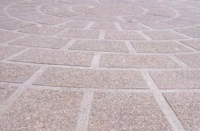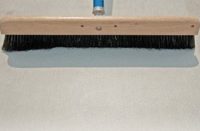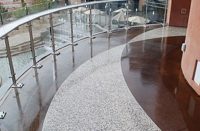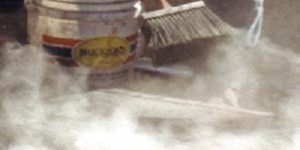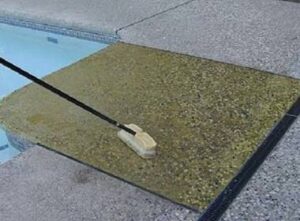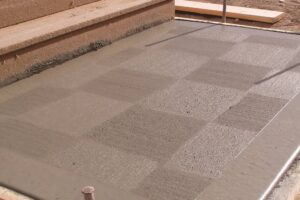Overlays, whether a commercial system or a custom-mixed blend, typically combine cement, various aggregates and polymer resins. These resins add additional flexural, abrasion and compressive strength. This virtually eliminates cracking, chipping, freeze-thaw damage, water discoloration and scuff marks. This list will go through the very basics of concrete overlays, so you can consider adding them to your line of work.
Instead of ripping out and replacing an existing surface, concrete overlays can be used over sound flooring made of concrete, vinyl or wood. Overlays, typically applied from ¼ to ½ inch thick, can restore, protect and enhance a surface with a new color, texture or pattern.
 Step 1:
Step 1:
Properly clean and prepare the existing substrate before applying a self-leveling overlay.
 Step 2:
Step 2:
If desired, “grout lines” are sawcut into the overlay for visual interest.
 Step 3:
Step 3:
Apply stain using a variety of techniques and colors, therefore enhancing the design created with the scorelines.
 Step 4:
Step 4:
Remove excessive stain and the neutralize the surface before sealing
 Step 5:
Step 5:
Cracks like these may eventually show through a thin concrete overlay, but proper surface preparation can minimize this problem.
Mastering the basics of concrete overlays is a great first step into bringing new streams of income to your decorative concrete business.
Shop Concrete Overlays at the Concrete Decor Store
